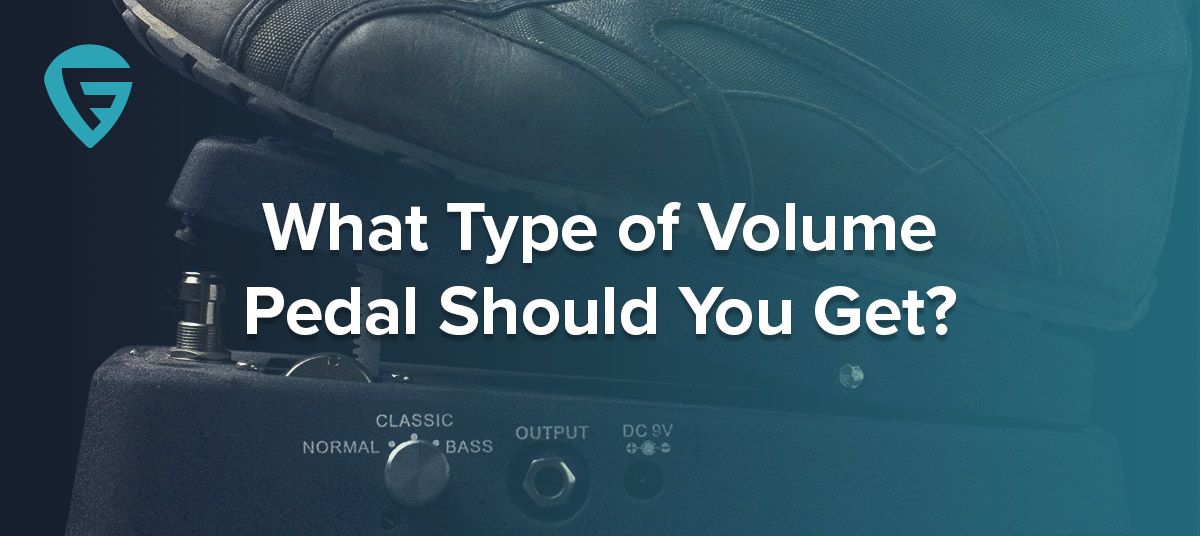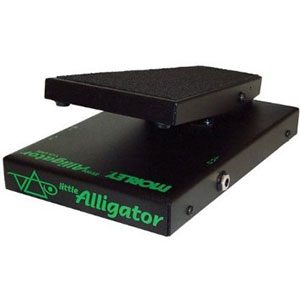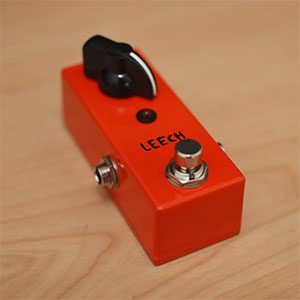- Home
- Instruments
- Gear
- Recording
- Lessons
- Reviews
- Blog

Even though volume pedals are not that popular in general, there are still a decent number of variations that you need to know about if you are thinking of adding this pedal to your signal chain. Not all volume pedals are the same, which is completely understandable.
However, knowing the difference between them can save you a decent amount of money and also allow you to get all the features you really need. If you just want a volume pedal, you don’t need to get into complex models. Just about anything out there that is marketed as a volume pedal will get the job done. If you would like to know more about how to use a volume pedal, check out our article here ‘How To Use a Volume Pedal’.
Today we’re going to look at some of the most popular varieties of volume pedals and talk in detail how each affects your tone. There are types of volume pedals out there which will give additional versatility, so that is also an option you have available.
With that said, a general recommendation is to have a decent understanding of what you need the volume pedal for prior to shopping for one. There are four standard types of volume pedals you can run into on the market. Let’s talk about each of them.
 A standard volume pedal will use pots, just like most other guitar effects pedal out there. However, since it’s an expression pedal, you will see some models with electro-optical mechanisms. Both of these have pros and cons. Pots are generally cheaper and more abundant, but they can fail over time due to constant wear. Electro-optical setups don’t have this issue.
A standard volume pedal will use pots, just like most other guitar effects pedal out there. However, since it’s an expression pedal, you will see some models with electro-optical mechanisms. Both of these have pros and cons. Pots are generally cheaper and more abundant, but they can fail over time due to constant wear. Electro-optical setups don’t have this issue.
Instead of using a potentiometer to regulate the volume, an electro-optical volume pedal uses sensors to determine how much attenuation should be applied. There is nothing to wear out in a pedal that uses an electro-optical system. If you are alright with spending a bit more money, you should definitely consider these as a valid option.
Volume pedals come in two different formats. You have mono and stereo volume pedals. Mono is pretty much the standard design found in a whole bunch of more affordable models. Stereo comes at a price that is almost double what you are expected to pay for a mono model, however it has its benefits. A stereo volume pedal allows you to plug in more than just one instrument.
It has two ins and two outs. So if you want to control the volume of more instruments at the same time, you can do that with a stereo volume pedal. That is not all it does, though. Since it has two outs, you can plug your whole signal chain to two separate amps. One benefit of doing this is the panning effect.
Using the expression pedal, you can pan your whole chain between two different amps. How important this is to you is something only you can answer, but there’s a number of guitar players who managed to achieve some pretty wild results using a stereo volume pedal.
 Volume pedals can be active or passive. This means that you can choose models that need no additional power or those which do. The main different between the two is in the features they offer. If a volume pedal comes packed with features, chances are it will require some kind of additional power supply.
Volume pedals can be active or passive. This means that you can choose models that need no additional power or those which do. The main different between the two is in the features they offer. If a volume pedal comes packed with features, chances are it will require some kind of additional power supply.
Passive volume pedals only offer the core performance of this effect. There are no bells and whistles to play with. The good thing about active volume pedals is their ability to still function without if no additional power is available. You won’t be able to use those extra features, but volume attenuation is still going to be there.

When we spoke about extra features in the previous paragraph, this is exactly what we were talking about. The ability to set minimum volume values allows you to physically prevent the pedal lower the volume below the set minimum. This is a very useful feature that many guitar players use a lot. Whether or not it’s something that you can benefit from depends on your playing style. The rule of thumb when it comes to extra features on volume pedals, is to expect to pay more.
These are the main four categories of volume pedals you will run into when you go shopping for one. Just like it’s the case with anything else, you get what you pay for. If you don’t need all the extra features, you can get yourself a pretty decent volume pedal for cheap. On the other hand, if you need the extra features, there is a lot to choose from.
At the end of the day, it all comes down to your personal preference. If money is not an issue, you can definitely boost your pedalboard in a way that is not otherwise possible to achieve. However, if you are operating on a tight budget, we definitely recommend that you start with a simple volume pedal and take things from there.
With all that stuff out of the way, feel free to explore the matter further by diving right into the meaty bit and checking out our list of Best Volume Pedals on the market today.

jabare says
What about the choice/ difference between hi and low impedance volume pedals?